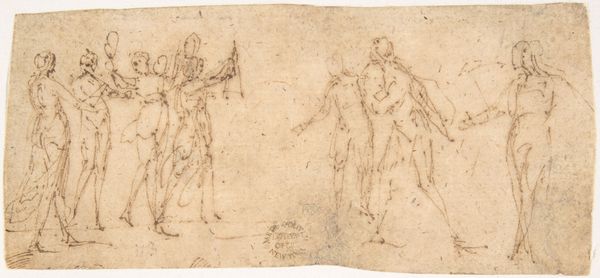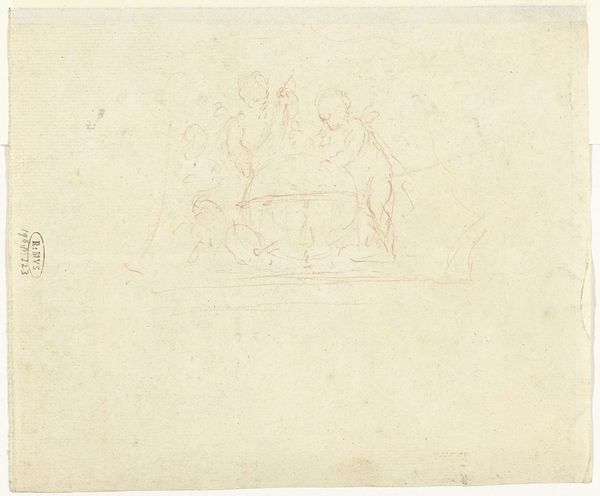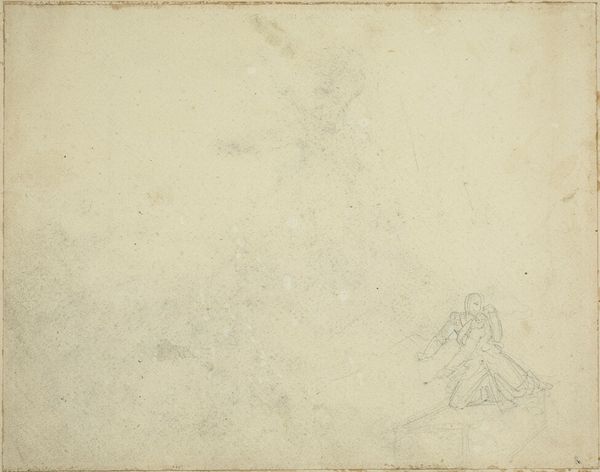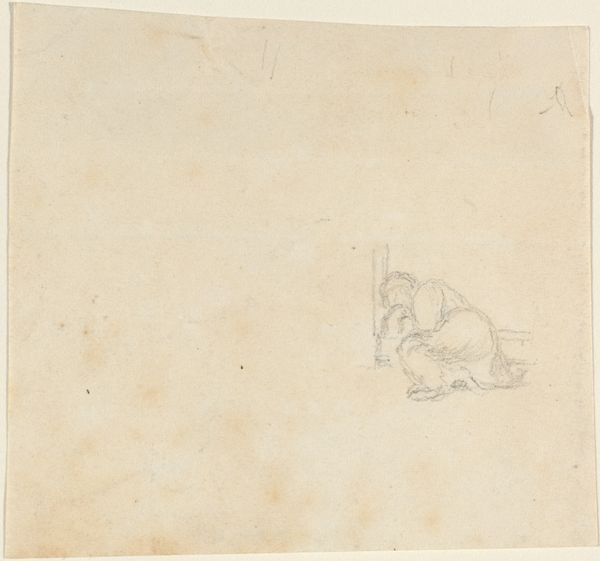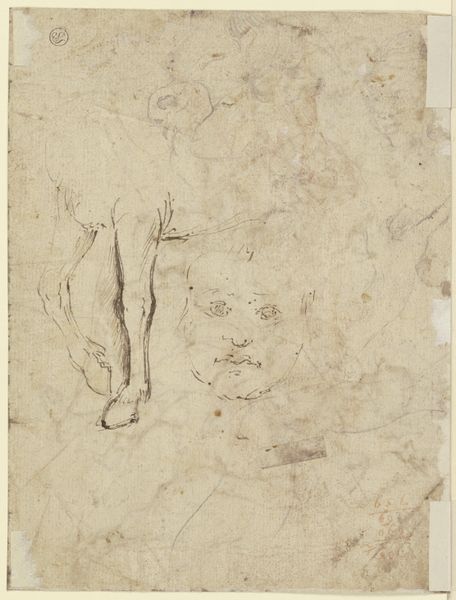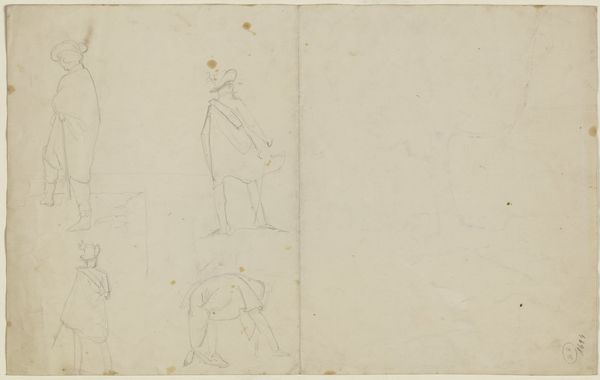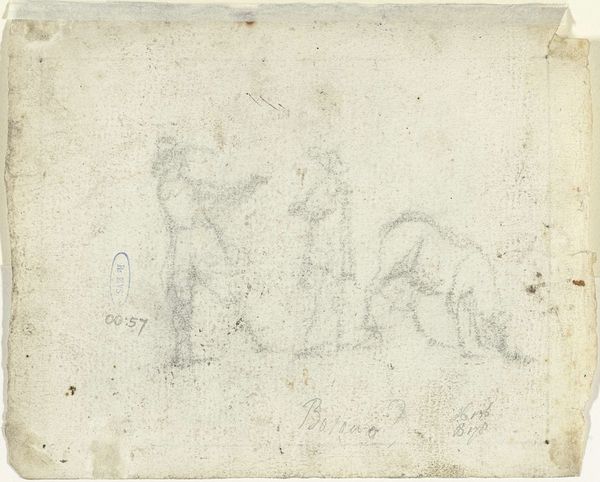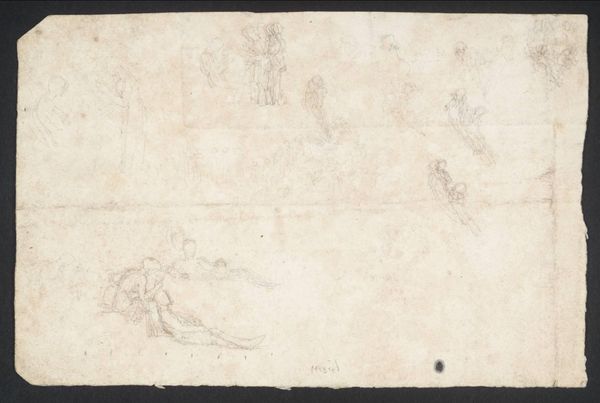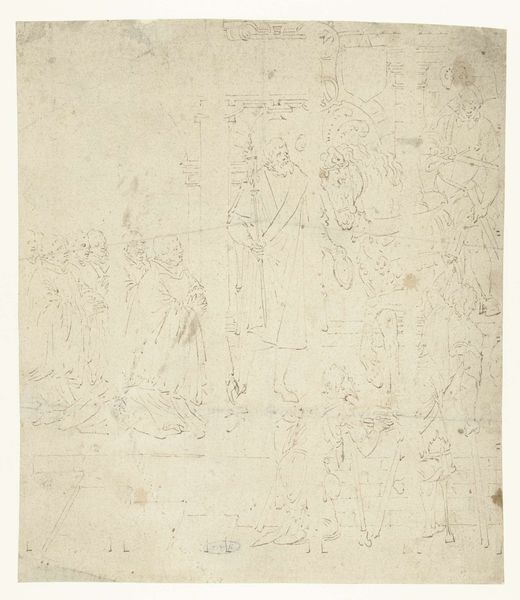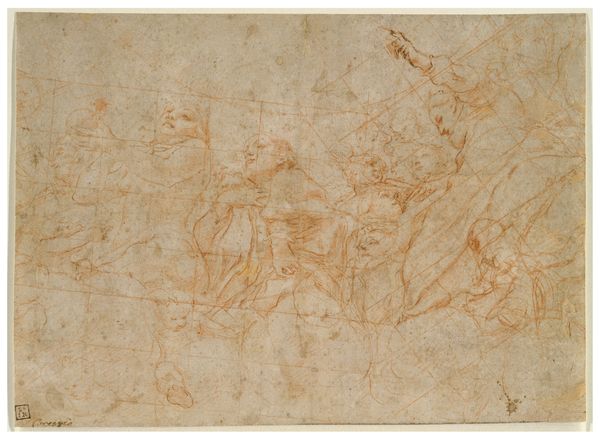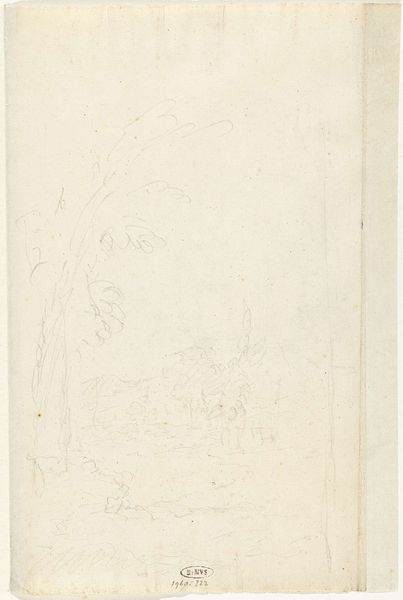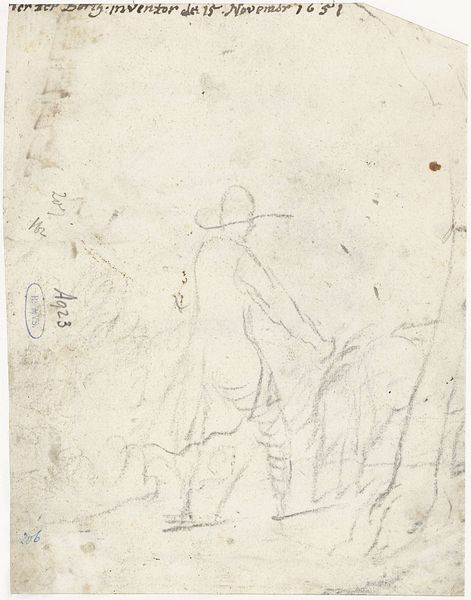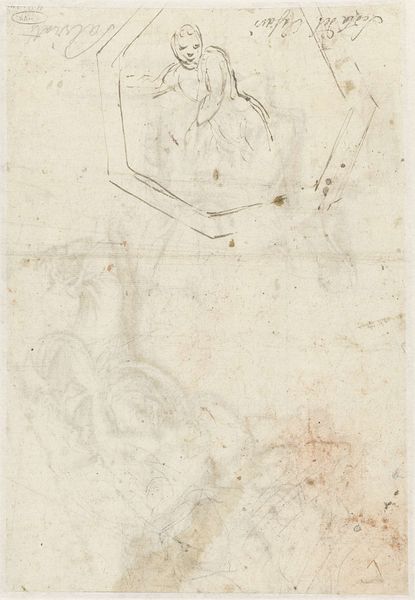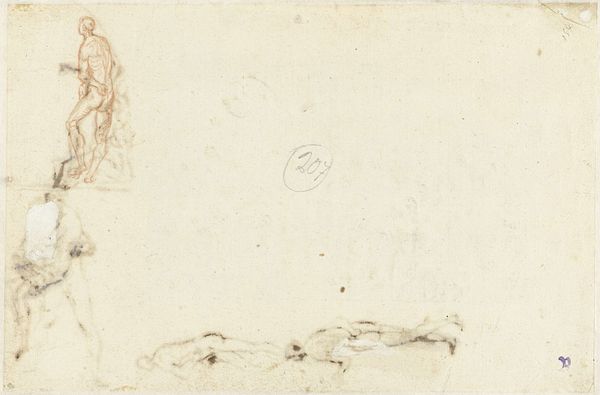
Dimensions: support: 130 x 191 mm
Copyright: CC-BY-NC-ND 4.0 DEED, Photo: Tate
Editor: So this is Joseph Highmore’s "Clarissa and Mr Lovelace at the Garden Door," a small pencil sketch. It feels like a fleeting moment captured, very intimate. What can you tell me about its historical context? Curator: Well, Highmore was known for illustrating Samuel Richardson's novels, and Clarissa was quite the cultural phenomenon. Consider how the novel explored themes of virtue, seduction, and social constraints, reflecting anxieties of the time. This sketch gives us insight into how the public engaged with these stories through visual imagery. Editor: So the art served almost as fan art, shaping the reception of the novel? Curator: Precisely. Think about the politics of representation here. How does Highmore’s sketch contribute to the ongoing narrative around Clarissa and Lovelace, influencing our understanding of their complex relationship and the societal forces at play? Editor: That's fascinating, I never thought about art as shaping public opinion of literature in that way! Curator: Indeed, it highlights how art can actively participate in cultural dialogues, reflecting and shaping perceptions of morality and power.
